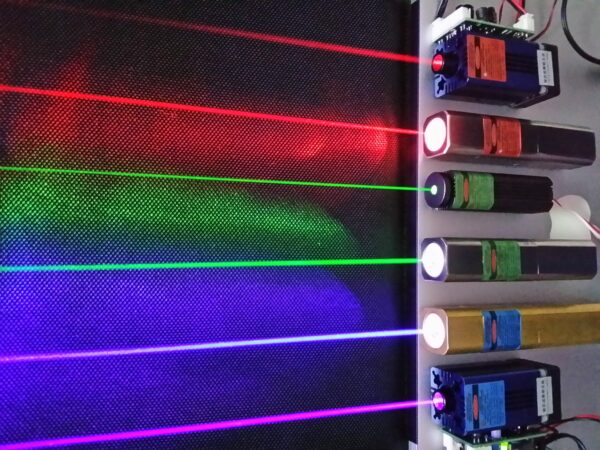Raman saw the fingerprints of the material, shaped like eyes in the formless.
Everyone has a unique fingerprint, and from the past to the present, identifying fingerprints has become an excellent piece of evidence for the police in their search for a murderer. Different materials also have their own "fingerprints" because the bonding between atoms creates unique vibrations. Raman spectroscopy is a method of identifying materials by detecting changes in the energy of photons that are injected into the material and interacting with the molecules of the material, causing the photons to lose some of their energy. This technique is widely used in nanotechnology, food and drug testing, art conservation and archaeological exploration.
Raman spectroscopy is a powerful tool for the detection of materials, named after Chandrasekhara Venkata Raman, a physicist from British India who won the 1930 Nobel Prize in Physics. Raman spectroscopy is a "light-in-light-out" process. After a photon of a specific energy is injected into a material, the photon interacts with different molecules, causing the photon to lose some of its energy, and when the photon is ejected from the material, the material can be characterized by detecting the change in its energy.
Fig. 1: Chandrasekhara Raman, a British-Indian physicist who developed Raman spectra by studying light scattering and won the Nobel Prize in Physics in 1930|Image courtesy of Wikimedia Commons.

What kind of light source is needed for Raman spectroscopy?
In order to facilitate the detection of changes in photon energy, the energy of the light source must be single, that is to say, only a "single wavelength" light source can be used. If there are different wavelengths of light in the light source (e.g., fluorescent lamps), the signals are too many and it is very difficult to determine the changes in the energy, so the "laser" has become the best source of light for Raman spectroscopy.


Figure 3: This is the spectrum of a HeNe laser, the color of which is red, and we can see that the peak at a wavelength of 632.8 nm is quite sharp, which means that the wavelength range is "very narrow" as mentioned above, so if its light energy is altered by the material, it will be very obvious and can be easily observed. Image courtesy of Wikimedia Commons.
Laser has the characteristics of highly monochromatic light, and in addition to the characteristics of a single wavelength of light, it also has a very narrow wavelength range (Fig. 3), and the peaks in the infographic are quite sharp, so when the material molecules vibrate with the photons, it is possible to determine the very small energy changes. If the wavelength range is not narrow enough, the scattered light of the energy change may be buried in the original photon wavelength signal, and it is impossible to read the difference of the energy change smoothly (Fig. 3 If there are many large and small peaks, it will be difficult to compare the difference). Furthermore, lasers are high intensity light sources and have very high collimation. The high intensity is similar to how we can read a book in a brightly lit room and see every word clearly, but if the room is dimly lit, reading becomes very difficult. In the same way, because of the laser's high intensity, it is much easier for us to obtain the signals generated by Raman spectroscopy. On the other hand, the laser's high collimation allows scientists to focus the laser through a combination of lenses, which not only increases the intensity of the light, but also accurately illuminates the laser light on the correct location of the material, and allows measurements to be made in a very small area, with focusing down to the micrometer level.
Reference: https://case.ntu.edu.tw/blog/?p=41500
Center for Science Education Development, National Taiwan University






